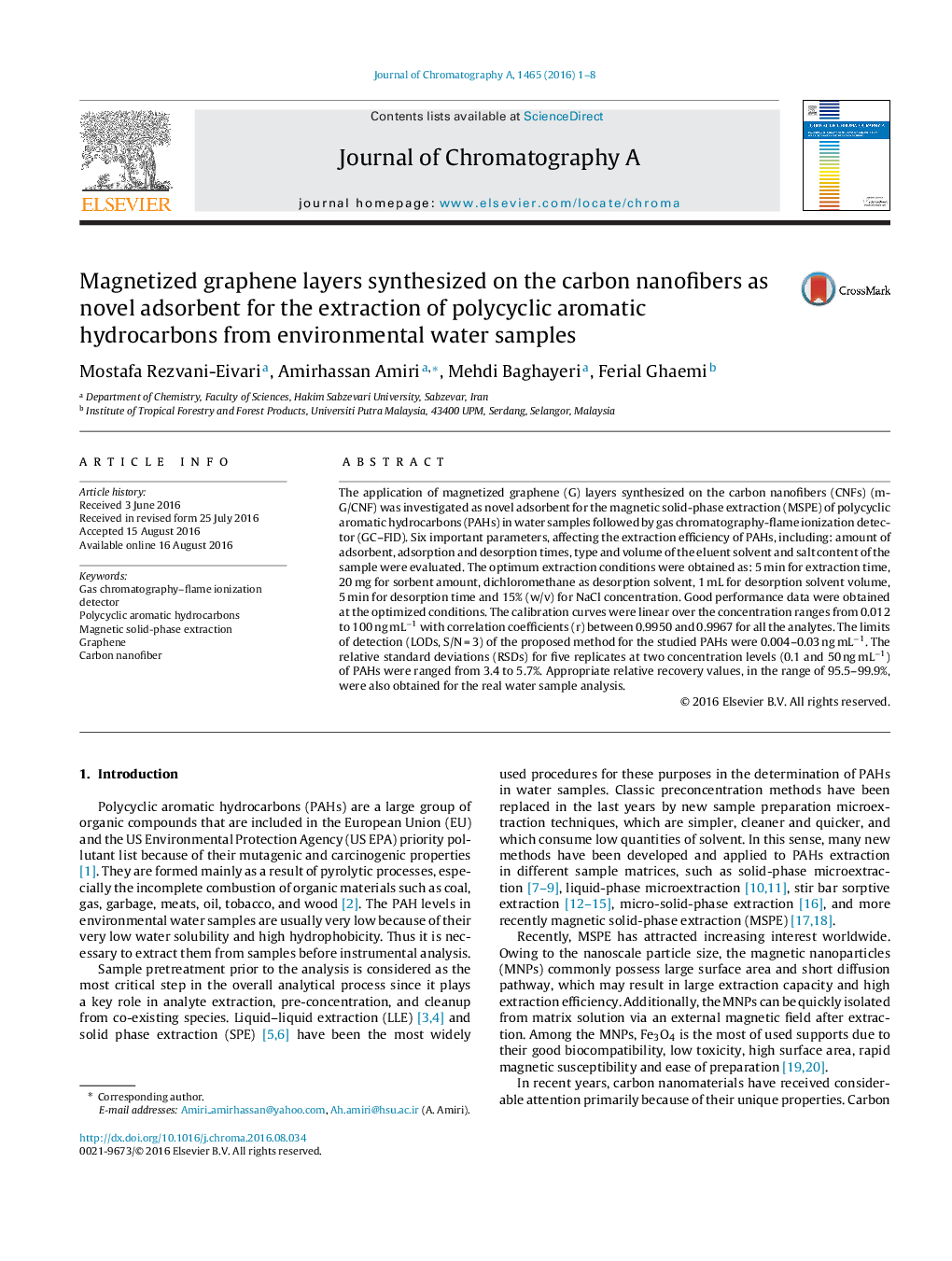| Article ID | Journal | Published Year | Pages | File Type |
|---|---|---|---|---|
| 5135939 | Journal of Chromatography A | 2016 | 8 Pages |
â¢m-G/CNF nanocomposites were designed and synthesized.â¢The new material exhibited good chemical stability and was used as a MSPE material.â¢The proposed method achieved low LODs, wide linearity, and good precision for PAHs.â¢The material was used for the enrichment and determination of PAHs at trace levels.
The application of magnetized graphene (G) layers synthesized on the carbon nanofibers (CNFs) (m-G/CNF) was investigated as novel adsorbent for the magnetic solid-phase extraction (MSPE) of polycyclic aromatic hydrocarbons (PAHs) in water samples followed by gas chromatography-flame ionization detector (GC-FID). Six important parameters, affecting the extraction efficiency of PAHs, including: amount of adsorbent, adsorption and desorption times, type and volume of the eluent solvent and salt content of the sample were evaluated. The optimum extraction conditions were obtained as: 5 min for extraction time, 20 mg for sorbent amount, dichloromethane as desorption solvent, 1 mL for desorption solvent volume, 5 min for desorption time and 15% (w/v) for NaCl concentration. Good performance data were obtained at the optimized conditions. The calibration curves were linear over the concentration ranges from 0.012 to 100 ng mLâ1 with correlation coefficients (r) between 0.9950 and 0.9967 for all the analytes. The limits of detection (LODs, S/N = 3) of the proposed method for the studied PAHs were 0.004-0.03 ng mLâ1. The relative standard deviations (RSDs) for five replicates at two concentration levels (0.1 and 50 ng mLâ1) of PAHs were ranged from 3.4 to 5.7%. Appropriate relative recovery values, in the range of 95.5-99.9%, were also obtained for the real water sample analysis.
